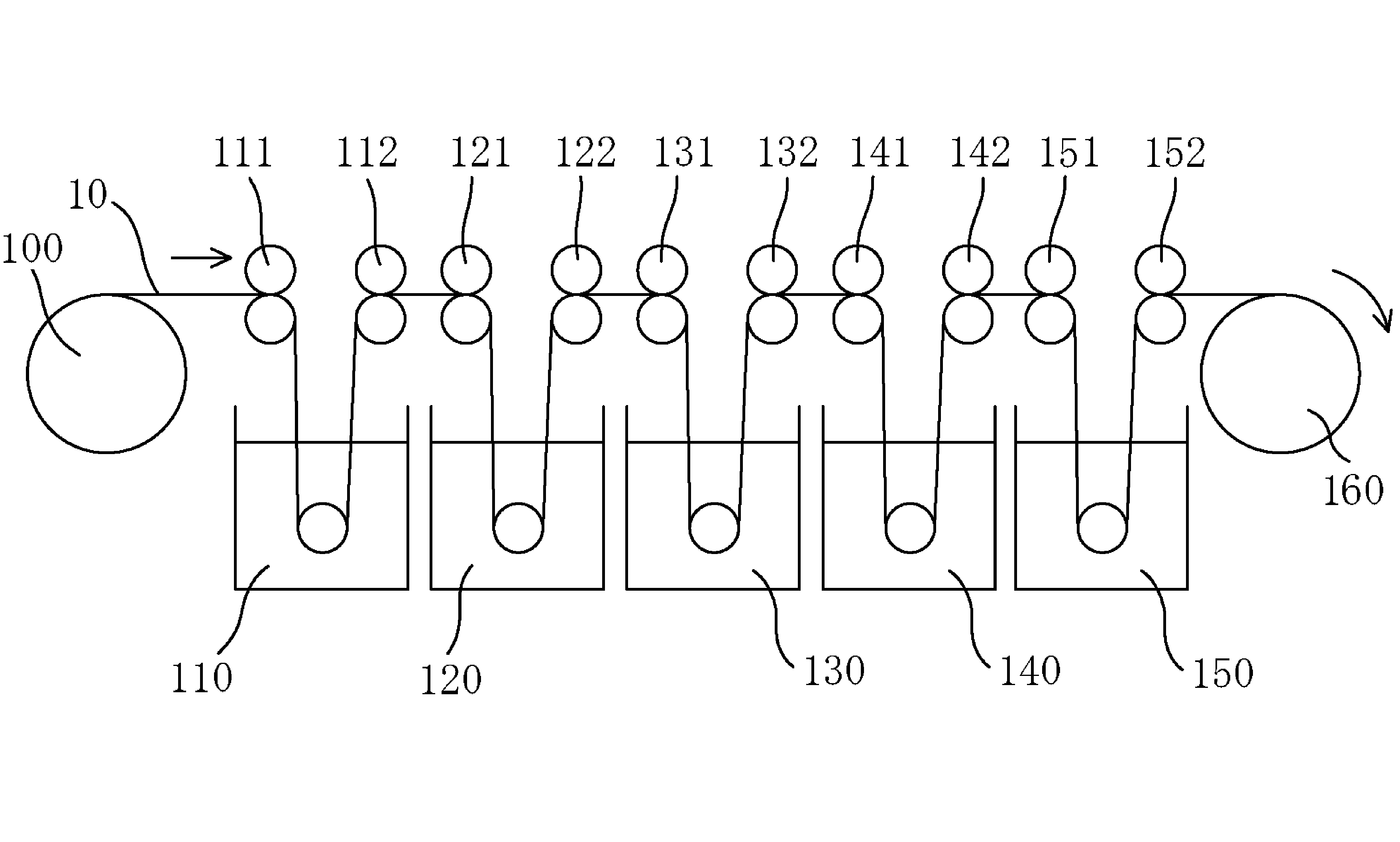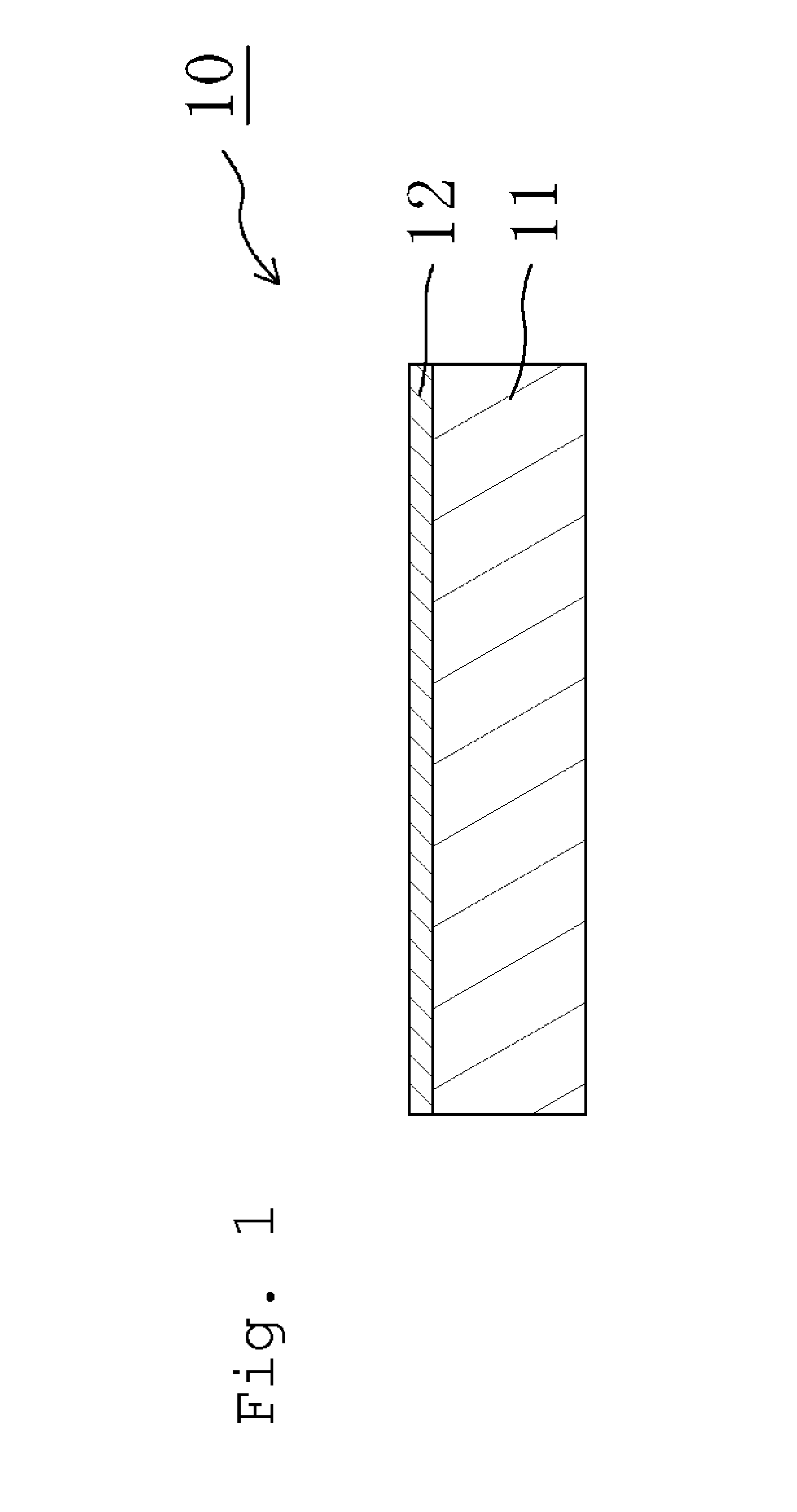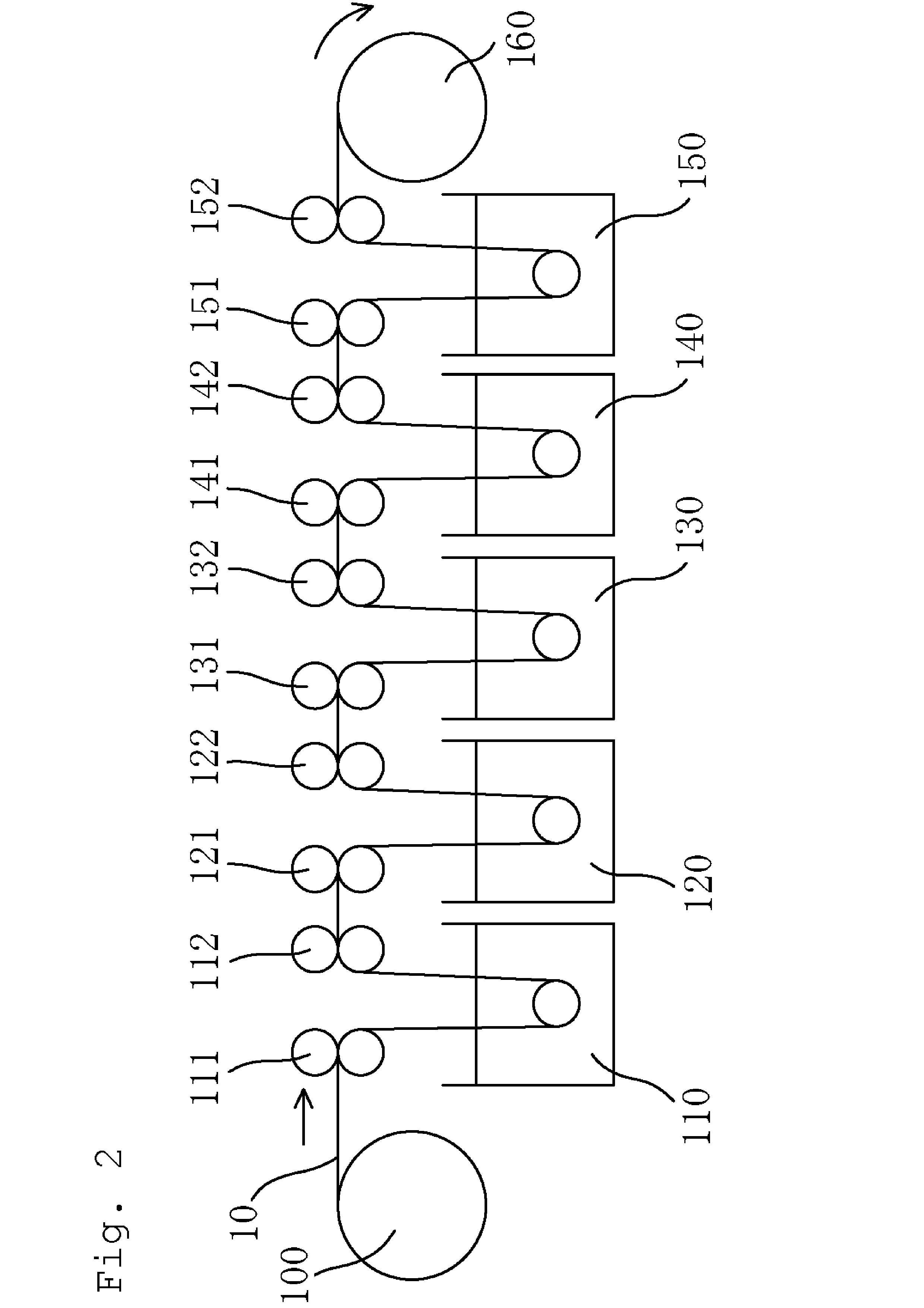Thin polarizing film, optical laminate with thin polarizing film, and production method for thin polarizing film
a production method and technology of polarizing film, which are applied in the direction of polarizing elements, instruments, applications, etc., can solve the problems of low recycling efficiency, large environmental load, and low ratio of polarizing film which has become industrial waste, and achieve excellent optical characteristics, favorable manner, and high ratio
- Summary
- Abstract
- Description
- Claims
- Application Information
AI Technical Summary
Benefits of technology
Problems solved by technology
Method used
Image
Examples
example 1
[0078](Step A)
[0079]An amorphous polyethylene terephthalate (A-PET) film (manufactured by Mitsubishi Plastics, Inc., trade name “NOVACLEAR,” thickness: 100 μm) having a percentage of water absorption of 0.60% and a glass transition temperature (Tg) of 80° C. was used as a thermoplastic resin substrate.
[0080]An aqueous solution of a polyvinyl alcohol (PVA) resin (manufactured by The Nippon Synthetic Chemical Industry Co., Ltd., trade name “Gohsenol (trademark) NH-26”) having a polymerization degree of 2,600 and a saponification degree of 99.9% was applied onto one surface of the thermoplastic resin substrate and dried at 60° C. so that a PVA-based resin layer having a thickness of 7 μm was formed. Thus, a laminate was prepared.
[0081]The resultant laminate was immersed in an insolubilizing bath having a liquid temperature of 30° C. (an aqueous solution of boric acid obtained by compounding 100 parts by weight of water with 3 parts by weight of boric acid) for 30 seconds (insolubilizin...
example 2
[0087]A thin polarizing film was obtained in the same manner as in Example 1 except that a polymethylpentene film (manufactured by Mitsui Chemicals, Inc., trade name “TPX, ” thickness: 100 μm) having a Tg of 30° C. was used as a thermoplastic resin substrate.
[0088]The maximum stretching ratio in the step C was 5.5 times, and the thickness of the resultant thin polarizing film was 3 μm.
example 3
[0089]A thin polarizing film was obtained in the same manner as in Example 1 except that in the preparation of the laminate, the PVA-based resin layer was formed so that its thickness was 10 μm.
[0090]The maximum stretching ratio in the step C was 5.0 times, and the thickness of the resultant thin polarizing film was 5 μm.
PUM
| Property | Measurement | Unit |
|---|---|---|
| transmittance | aaaaa | aaaaa |
| transmittance | aaaaa | aaaaa |
| thickness | aaaaa | aaaaa |
Abstract
Description
Claims
Application Information
 Login to View More
Login to View More - R&D
- Intellectual Property
- Life Sciences
- Materials
- Tech Scout
- Unparalleled Data Quality
- Higher Quality Content
- 60% Fewer Hallucinations
Browse by: Latest US Patents, China's latest patents, Technical Efficacy Thesaurus, Application Domain, Technology Topic, Popular Technical Reports.
© 2025 PatSnap. All rights reserved.Legal|Privacy policy|Modern Slavery Act Transparency Statement|Sitemap|About US| Contact US: help@patsnap.com



